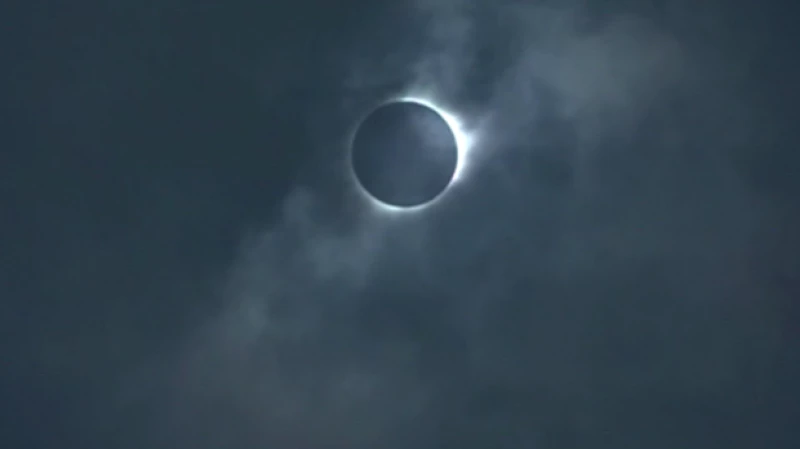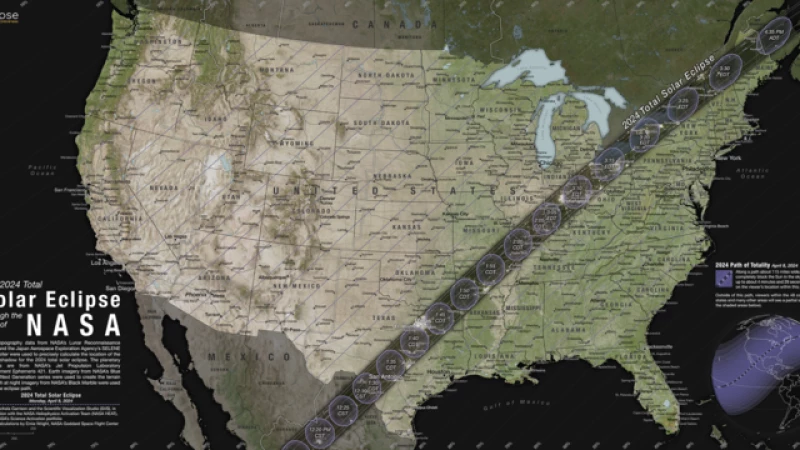The upcoming solar eclipse on April 8 will darken the sky for millions as the moon passes in front of the sun – but the spectacle could also affect how much solar power gets generated.
The Electric Reliability Council of Texas, known as ERCOT, which provides solar service to 90% of the state, says the event will affect solar production in Texas between 12:10 p.m. and 3:10 p.m. CDT while the eclipse passes over the state from the southwest to the northeast.
"ERCOT is working on forecasting models to reflect solar generation on the grid during the eclipse," a representative for ERCOT told CBS News via email. "ERCOT does not expect any grid reliability concerns during the eclipse. ERCOT will use all available tools to maintain grid reliability and will continue to monitor conditions and keep the public informed through our communications channels."
Solar power accounts for about 3.9% of the energy generated in the U.S. in 2023, according to the U.S. Energy Information Administration. In Texas, solar energy accounted for 6% of the energy generation in 2022, according to ERCOT.
Due to its generally sunny weather, Texas is the second-largest solar producer in the U.S., after California.
During the 2017 eclipse, California prepared for solar power outages, with state agencies urging people to cut back on power use during the event.
ERCOT, however, hasn't asked people to reduce power use during the eclipse, the representative said.
Utilities and grid operators across the U.S. prepared for the possibility of a drop in solar power during the 2017 eclipse as well. Standby power sources were lined up and simulations of the potential impact were run, according to Reuters.
But analysis from the National Renewable Energy Laboratory found the 2017 eclipse didn't cause any issues to the operation of the North American electric power system.
The April 8 solar eclipse will start on Mexico's Pacific coast at around 11:07 a.m. PDT. It will then travel across parts of the U.S. and into Canada and will leave continental North America at 5:19 p.m. EDT.

About 31.6 million people live in the 200-mile path of totality — the path where the total solar eclipse will be visible, according to NASA. For the 2017 eclipse, an estimated 12 million people were able to see a total solar eclipse.
All regions within the path of totality for the upcoming April eclipse are anticipated to experience a reduction in solar power generation, as stated by Hugh Cutcher, a data scientist at Solcast, a solar forecasting and data company.
Texas is projected to bear the brunt of this impact, with a potential loss of up to 16% of their daily irradiance, or solar energy, according to Cutcher. He explains, "The rapid fluctuation in generation could lead to grid instability, prompting asset managers, energy traders, and grid operators to focus on maintaining stability while navigating volatile energy prices."
On the East Coast, where solar power usage is lower compared to Texas, the eclipse's effects are expected to be less pronounced. Nevertheless, rooftop solar panels may still be affected, with New York Independent System Operator, responsible for managing New York's solar power grid, potentially experiencing a 10.9% decline in solar generation from these rooftop installations, based on Cutcher's analysis.
NASA has highlighted that the eclipse can lead to a drop in temperatures. For instance, during a solar eclipse in 2001, temperatures in Lusaka, Zambia, fell by nearly 15 degrees as the moon obscured the sun's warmth. However, NASA indicates that this cooling effect may be brief, as daylight is expected to return within two to three minutes, potentially making the temperature change imperceptible on thermometers.






